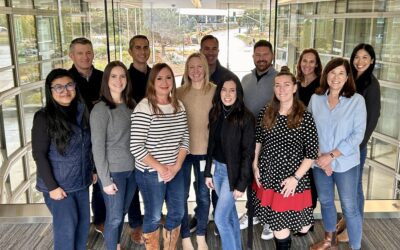It’s important to recognize two approaches to employee development: the conventional approach that focuses on areas of weakness, and the strength-based approach that focuses on identifying and leveraging an individual’s unique talents and strengths. As a leader in organizational development, Breanna Jackson, MBA, SHRM-CP, believes the strengths-based approach to employee development promotes a more equitable workplace.
Breanna sat down with Victoria Rodgers (IDEA Strategist & Coach) to share perspectives on how this approach gleans outcomes rooted in equity, inclusion, and positive well-being. Keep reading for five actionable takeaways covered by Breanna.
1. Identify and leverage each employee’s unique strengths
By recognizing and leveraging the unique strengths of each employee, leaders can create a more engaged and productive workforce. This approach allows employees to contribute to the team in a way that feels authentic and fulfilling.
Breanna believes that when it comes to employee engagement, it’s important for supervisors to provide feedback that’s more positive than negative. While employees aren’t children, they still appreciate validation and recognition for their accomplishments, and supervisors should take this into account during a 360° assessment . It’s not uncommon for employees to feel like they’re constantly being criticized or nitpicked, which can lead to disengagement and low morale. By focusing on strengths and giving positive feedback, supervisors can foster a more positive and productive work environment.
2. Actively listen to improve recognition
Everyone wants and deserves recognition in different ways. For some, recognition may come in the form of more work that demonstrates trust in their abilities. For others, they may simply want acknowledgement for a job well done.
As Breanna explained, exploring your strengths and understanding how they manifest requires significant effort. However, once you can clearly articulate who you are to teammates and supervisor, as well as what you need to thrive, you are better equipped to do your best work and receive valuable feedback and assignments that align with your capabilities. This approach allows Breanna to perform tasks well-suited to her strengths while feeling appreciated and recognized.
3. Provide structure and clarity
While it’s important to recognize and leverage an employee’s strengths, it’s also important to provide structure and clarity. By doing so, employees will feel welcomed and included, which can help mitigate conflicts arising from differences in communication styles or work approaches.
According to Breanna, her work revolves around the concept of “office confidence,” which she defines as the ability to confidently articulate your professional brand, value, and strengths in the workplace to improve your sense of career well-being. By understanding your strengths and how they can contribute to your work, you can better position yourself for success and fulfillment in your career. Breanna believes that office confidence can help individuals navigate the workplace with greater self-assurance and can ultimately contribute to creating a more equitable and inclusive work environment.
4. Foster a sense of psychological safety
Leaders should foster a sense of psychological safety, which means creating an environment where employees feel that they can speak up, share ideas, and take risks without fear of punishment or retribution. Here lies the importance of curiosity in being allies in the DE&I space. By embracing diversity and being open to different approaches, leaders can help create a more equitable workplace where everyone feels included and valued.
Asking questions like “Tell me more about that,” “how does this show up for you” and “what do you need to feel more comfortable or included” can help foster a sense of psychological safety. Breanna also draws on an analogy of 1+1+1+1=4 being equivalent to 2+2=4 and 5-1=4 to suggest that there are different ways of approaching work and that it’s important to recognize the unique strengths and perspectives that each individual brings to the table.
5. Embrace the tension
Adopting a strength-based approach does not mean ignoring areas of improvement or accountability. Rather, it means understanding an employee’s unique strengths and leveraging them to accomplish tasks in a way that feels authentic and fulfilling. Leaders should embrace the tension that may arise from differences in communication and work styles by focusing on mitigating conflicts to promote collaboration and productivity.
Breanna shared that leaders who use this approach are signaling to her their openness to exploring alternative paths to accomplish the end goal while disrupting limited beliefs that just because we are focused on strength-based development, they aren’t sacrificing accountability. Subsequently, you may hear an employee say, “I still need to do the work, but I get the opportunity to do my best work.”
The power of strengths-based employee development
Leading with a strengths-based, equitable approach requires a commitment to understanding and leveraging each employee’s unique strengths, providing recognition and affirmation, providing structure and clarity, fostering a sense of psychological safety, and embracing the tension. By doing so, leaders can create a more engaged and productive workforce better equipped to tackle challenges and achieve goals.
About Breanna
Breanna Jackson, MBA, SHRM-CRP (she/her/hers) is a strong HR leader and Gallup-certified Strengths coach who enjoys empowering audiences to create individual development plans that help them become the professionals they want to be by activating what she calls “office confidence.” Office confidence is unapologetically articulating your professional brand, value, and strengths in the workplace to improve your career well-being. Breanna encourages her clients to learn more about what they naturally do well and how to leverage that uniqueness in the workplace as a culture add and maximize relationships with colleagues and leaders.




